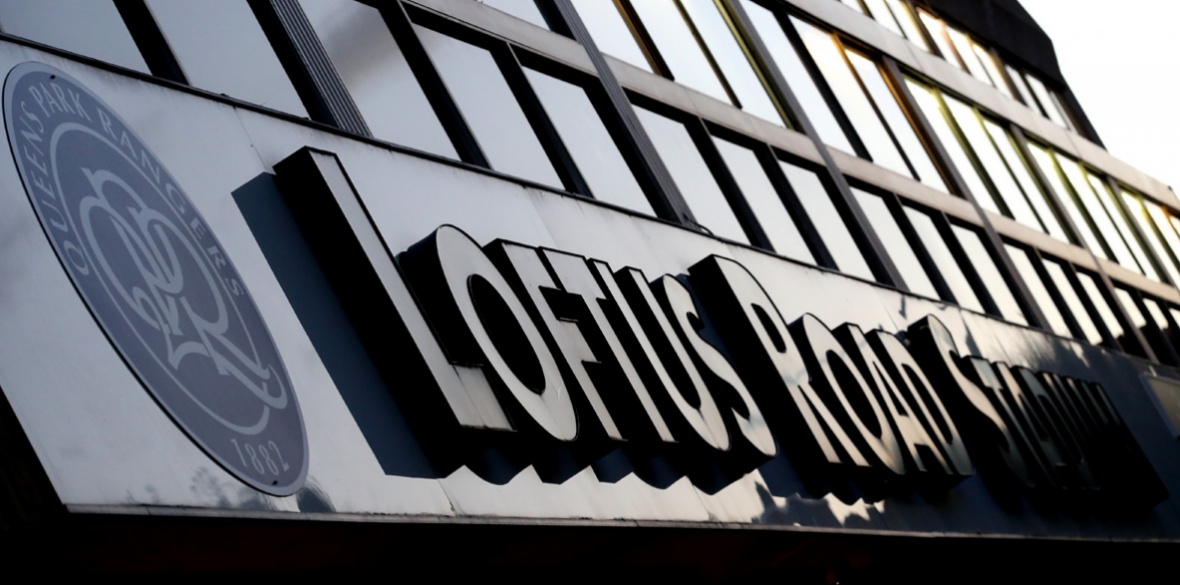This is the last article you can read this month
You can read more article this month
You can read more articles this month
Sorry your limit is up for this month
Reset on:
Please help support the Morning Star by subscribing here
FOR many years, on a wall near a bus stop marking the start of the 94 bus route, there was a piece of graffiti extolling one of the greatest goals in football history.
The evocative red London bus starts outside Acton Green Common and takes in various parts of west London including Shepherds Bush, the home of Queens Park Rangers.
While a trio of teams from this part of the world continue to make Premier League headlines — Chelsea, Brentford and Fulham — Championship side QPR are attempting to recapture former glories under Gareth Ainsworth.
Yet, while the noise from their geographical rivals at the top table continues to grate Rangers fans, older supporters still recall with pride a raft of fine players in fine teams in the storied blue and white hoops.
In our shiny world full of Premier League hyperbole and vacuous chat about transfer fees, many fans across London and beyond remember the style and swagger this unprepossessing club used to display on a regular basis.
While hopes for a successful 2023-24 season rest on the likes of unpolished diamond Sinclair Armstrong and the hugely talented Ilias Chair (as an aside, this correspondent once saw the 25-year-old Moroccan international score two cracking long-range goals, hit the woodwork twice and have two efforts cleared off the line when on loan to Stevenage in 2019 during a frenetic 2-2 draw with eventual League Two champions Lincoln City), it is fair to say the second tier is arguably English football’s biggest challenge, certainly in terms of its unrelenting intensity.
The season hasn’t started too kindly for the Loftus Road outfit, with Ainsworth’s side losing 4-0 to Watford at Vicarage Road on the opening day, prior to a heartening 2-1 win at Cardiff, followed up by a low-key 1-0 loss at home in midweek to Norwich, as they exited the League Cup at the first-round stage.
Ainsworth’s side face the Canaries’ bitter rivals Ipswich Town on Saturday at their — at times — wonderfully atmospheric stadium, situated near Shepherd’s Bush Green, nestled between residential streets and White City.
However, the mind drifts back to the flair and elegance, magnetism and dazzle of enigmatic former Superhoops characters and sides, with many embedded in football folklore.
Rodney Marsh joined from Fulham in 1966, to fire 44 goals in 53 games to help Rangers win the Third Division title, earning Third Division top goalscorer along the way — as Alex Stock’s side also won through to Wembley, going on to lift the 1967 League Cup, while becoming Second Division runners-up a year later.
Marsh was a maverick who could dribble as if the ball was stuck to his foot, the old timers used to say. Incidentally, Marsh, before his skills made him a household name, grew up in dirt poor post-war conditions in Stoke Newington. That was until his dad — who helped their landlord fill in their weekly pools coupon — helped the man to a large win, shortly before the landlord died, leaving the house to the Marsh family.
Terry Venables made 179 appearances for QPR, netting 19 goals and playing a pivotal role to help the R’s to promotion back to the topflight during the 1972-73 season — as a player as well as a burgeoning coaching talent under Gordon Jago. (After coach Bobby Campbell departed to Arsenal, Jago allowed Venables to conduct training sessions while still a player).
No wonder Venables admitted that his transfer from Spurs to west London changed his life, explaining later: “I cannot think of a transfer blessed with such good fortune.”
The charismatic Venables went on to become manager of QPR between 1980-1984 — before La Liga giants Barcelona lured the Loftus Road legend to the sunnier climes of the Nou Camp and the 1984-85 Spanish title, while also reaching the 1986 European Cup final in Seville, only to fall on penalties to Steaua Bucharest.
Venables of course, was part of arguably the finest QPR side in their 141-year history, after being formed as Christchurch Rangers in 1882, taking on their current name four years later when merging with St Jude Institute. The club led a peripatetic existence across west London until finally moving to Loftus Road in 1917.
A free-flowing, hugely entertaining Rangers side, which included a litany of talented names including the one and only Stanley Bowles, the pace and strength of Dave Thomas, Gerry Francis and the teak tough 19070-71 double winner Frank McClintock, mistakenly deemed surplus to requirements at Highbury, ended the season as runners-up, a single, measly, point behind the title winners from Merseyside after Bob Paisley’s all-conquering Liverpool side foiled Rangers’ hopes.
Loyal QPR fan Kieran Fanning who grew up in Rangers territory in nearby Acton, and who will be at Loftus Road on Saturday recalls his first match, a 7-0 victory over Burnley in 1979. “My dad and brother and me, we stood in the School End below the scoreboard.
“I think going to Rangers as a kid was an escape from growing up in a tough working-class environment — and from then on it just becomes who you are, regardless of if the team is good or bad.”
The loyal R’s fanatic recalls trips to Wembley in 1982 as Venables side took Glen Hoddle’s Spurs to a replay in that year’s FA Cup final, as well as promotion back to the topflight a year later.
“The 82-83 promotion season was fun, I seem to remember a mass pitch invasion against Wolves who finished second, involving both sets of fans and several police horses,” says Kieran as he recalls notable moments, good and bad, before adding: “Losing the two cups were real lows.”
The Superhoops reached Wembley again in 1986, this time getting the better of Liverpool over two legs in the semi-final, only to be dispatched 3-0 by Jim Smith’s excellent Oxford side at the national stadium. Smith himself was to take over at QPR shortly afterwards.
As the 1980s slid into the 1990s and into the new millennium, Kieran cites relegation in 1995-96 as another low, along with “Richard Thompson’s reign as chairman, being skint as a club after that, while also realising that the new money was a false dawn” were also demoralising moments in the lift of QPR fans everywhere.
Yet Kieran and the club’s fanbase weren’t alone in taking great pride in the emergence of Paul Parker as a top class right-back that led the elegant defender all the way to the World Cup semi-final as an England international, during the summer of Gazza’s tears at Italia 90.
Kieran also adds: “Finishing top London club twice — including the first year of the Premier League were highlights,” even if Rangers couldn’t maintain such form, eventually subsiding after selling the popular Les Ferdinand to Kevin Keegan’s Newcastle, following an impressive performance against the Magpies at Loftus Road in February 1995, when “Sir Les” as he was known by R’s fans grabbed a brace in blue and white and was virtually unplayable, such was his powerful performance.
In the years since, there have been many players to wear the iconic shirt with pride.
Step forward Adel Taarabt, Alejandro Faurlin, Jamie Mackie, Shaun Derry, Richard Dunne, Clint Hill, Charlie Austin and Kyle Walker (loan) as players who have stood out for the Rs.
On Saturday, and throughout this fledgling season, the club’s loyal fanbase will be hoping for the emergence of further names to add to that hallowed list.
As for the graffiti on that Acton wall next to the 94 bus top?
It was a paean to Trevor Sinclair’s wonder strike at Loftus Road against Barnsley in 1997. Yet another exciting, creative talent to have earned his stripes with QPR fans.
“I was there that day,” says Kieran with a smile. “I remember even the Barnsley fans were clapping how good Sinclair’s goal was. Mind you,” loyal QPR fan Kieran adds with gallows humour: “It was typical Rangers that day, as Andy Impey got sent off for punching someone and Tony Roberts made a howler in goal to set up a nervy finale.
“All in the life of a Rangers’ fan — no wonder St Jude was the patron saint of lost causes.”












